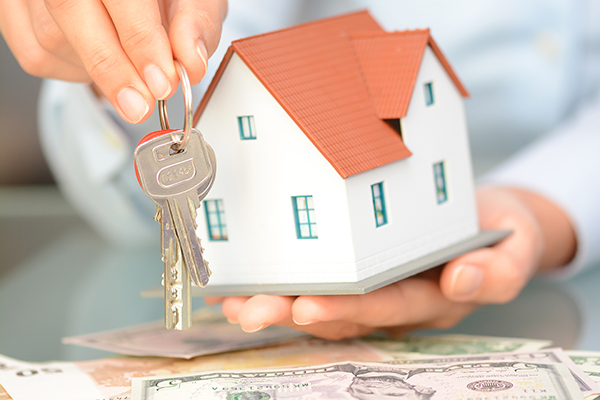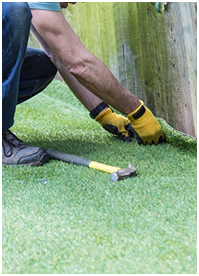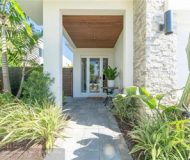April-May 2019 Newsletter
Down Payment Dilemma: How Do You Know How Much to Put Down On A Home?
By Debbie Wysocki
For many prospective home buyers, the down payment is the most daunting hurdle in the race to buy a home. Even for people with decent credit and a healthy paycheck, the down payment can be the great homeownership killer.
The big question for all prospective buyers is: how much should my down payment be? Most lenders will tell you that 20 percent is the standard, but is that really necessary?
The short answer is no, but of course there are some caveats.

“It’s a myth that all homeowners must have a 20 percent down payment to buy a home,” says Norman Fisher, a senior Loan Officer at Supreme Lending in Fort Lauderdale, FL.
Here is a link to Chapter 2 of my book How to Buy Your Next Home in 5 Easy Steps.
In this chapter, Norm Fisher will share the ‘ins and outs’ about mortgages (yes you really can get a mortgage with just 3% down). He also shares some additional check lists and important numbers to remember when you are preparing to purchase a home or get pre-approved for a loan. Norm will answer many questions you didn’t even know you had and he is part of a Company who has a mission that is all about Service.
So, it for this reason, it is Norm and the Supreme LendingTeam I TRUST the MOST to refer our clients to would also be able to assist our clients all over the country — and do it in record time — in several instances, Norm has been able to pick up the ball that another lender has dropped and close your loan in as little as 8 days!
Did you know that my favorite mortgage — the 15 year fixed mortgage (as of May 23rd) was under 3.25% ? That is a great rate. I put 15 year fixed mortgages on all of my investment properties. Remember — who is paying the mortgage? Other people (your tenants). With a 15 your fixed loan, you save about 1 percent on the mortgage rate (and, think of how much you save in interest . . .15 years worth)!
The Down Payment
If you find a great property and for some reason don’t have the money, I guarantee you, there will be an investor who will partner with you.
If you are a millennial — stop using UBER EATS. You will save up your down payment within 12 months! Stop leasing or buying expensive cars. For many years, I purchased an ALMOST new Escalade and drove it for 250,000 miles. And, now my daughter is driving it. You can look like a million dollars (shop shop high end consignment). Why on earth would you pay $3,500 for an outfit that you can pay $500 for. (This is just practical ‘mom’ advice and you can apply it to any item at any price range.)
And again, to our millennials — you have the income — just not the down payment — and you are the #1 buying group — purchasing more than 45% of homes — pay yourself first — and you can probably use the same play station you have and only go to 6 concerts this year instead of 20. You will be able to save up that down payment and a second one for your first investment property.
Hey — I have a millennial brother — so I see all his friends do crazy things . . . and yes . . . some potential clients just cannot come up with that potential down payment. I just told you how to tell your friends or your kids how to do it!
What is the downside of not having 20% for the downpayment?
It usually means you’ll have to shell out money for either private mortgage insurance (PMI) or government insurance, which is usually financed by the Federal Housing Administration, unless you are a Veteran, ” according to Norm Fisher.
The most important think to remember, is it is better to get in with a low down payment and begin building equity — (and have to pay the insurance), than to pay someone else’s mortgage (your Landlord).
The equity will quickly build up, and then you will be able to trade up and on your second home, you will have the 20% down!
Last point . . . Many clients have recently asked me
‘Are we in a bubble?’
Two years ago, an investor purchased 100 feet of oceanfront property — it was at the fair market price — it was not a ‘deal’ — it was a fair price. He could not decide whether he was building and he went on to purchase other properties. He worried that he overpaid.
Several times over the next 20 months I was called asking if it was for sale, and the answer was no. A very close colleague for 6 months asked me to ask him just one more time if he would consider selling. So this is where I had to ask questions – will you build — do you want to hold it and let it continue to appreciate (think use of money) — and because I check the market daily for prices, I knew the pricing.
My client asked me my opinion about asking for a price above the market (remember no house). My advice was that this was a unique piece of property – in fact one of the last remaining ocean front lots — and the potential buyers had been asking me about it for 6 months. I suggested he increase his price. AND, we got the higher price. My client made more than an 80% profit in 24 months. This how utilizing a knowledgeable Realtor can assist you with investing.

So, are we in a Bubble? When I hear this, I know they are listening to the National 6 o’clock news — which is the macro overview of the housing market.
Think about this:
1. We have the lowest unemployment of Latinos, Asians, African Americans, seniors, and students — and every other class of Americans I did not mention.
2. A very high performing stock market
3. And, relatively LOW interest rates
4. Appraisals are realistic on properties
5. While it is easy to get a Loan — it is not like it was in 2005 – 2007 where your dog could get a loan (and without income verification)
6. We are still in a sellers market in most parts of the country for starter homes because most home builders are not building OR are behind in building affordable housing (which in most instances this means it is cheaper to buy than rent)
7. The micro view — this means the City View — is different in every City. Only you or your Realtor knows what is happening.
In Fort Lauderdale, for example. There are certain (price points that are sellers markets and others that are buyers markets) — all within one City –and a Hyperlocal Market can be a street within a certain neighborhood — every area is different.
The market is not declining in Fort Lauderdale — it is STILL APPRECIATING. It is just appreciating at a slower rate –– the actual NORMAL Average range of just under 4% annually. According to 100 of the nation’s top economists (and looking at the 15+ cranes building downtown), we can expect a healthy housing market for South Florida for the next few years. And, of course, if you are ocean front, it will appreciate at a higher rate.
There are so many options available in this market of where to invest. While I personally focus on the East Florida Market, I have Teams all over the Country to assist you in buying or selling your home and investing. If you have questions, the most direct way to reach me is 954-579-5720 — Should you want to invest internationally — particularly in Europe and South America — we also have great Teams across the globe to assist you.
Looking forward to hearing from you . . . and how we can be of Service
Warmly,
Debbie
Realtor, GRI, CLHMS
Millon Guild Member
Certified International Property Specialist
To Turf of Not to Turf
Yard care is a big consideration for homeowners. Real grass is high maintenance, a water hog, and expensive to replace. Artificial grass may be a good alternative for some households. Here are some of the pros and cons of turf:



